“We’re the only two people in New York who don’t think we’re married.”
“Think? I know we’re not.”
“I’m beginning to have my doubts.”
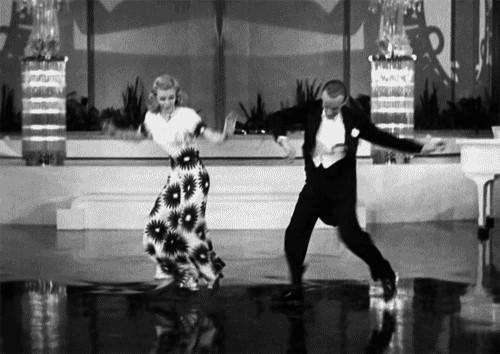 Ginger Rogers and Fred Astaire playfully arguing in Shall We Dance
Ginger Rogers and Fred Astaire playfully arguing in Shall We Dance
Fred Astaire and Ginger Rogers. The names themselves evoke images of effortless grace, dazzling footwork, and a cinematic partnership that defined an era of Hollywood musicals. Together, they weren’t just dance partners; they were a phenomenon, elevating dance on film to an art form. Their sixteen-year collaboration produced some of the most iconic moments in movie history, and it all began to truly ignite in 1933 with Flying Down To Rio. While supporting Dolores del Rio, Astaire and Rogers previewed a chemistry that audiences instantly craved, setting the stage for a series of spectacular dance films.
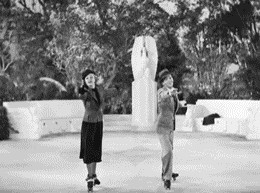 Fred Astaire gracefully leading Ginger Rogers in a dance pose
Fred Astaire gracefully leading Ginger Rogers in a dance pose
Among their celebrated filmography, including classics like Top Hat and Swing Time, Shall We Dance, released in 1937, holds a special place. This romantic comedy, their seventh on-screen pairing, uniquely blended ballet and tap, showcasing their versatility and pushing the boundaries of dance in film. While it might not have outperformed its predecessors at the box office, Shall We Dance is rich in artistic merit, largely thanks to the legendary songwriting duo George and Ira Gershwin, whose contribution was crucial to the film’s enduring appeal.
 Scene from Shall We Dance featuring Fred Astaire and Ginger Rogers in formal attire
Scene from Shall We Dance featuring Fred Astaire and Ginger Rogers in formal attire
However, the genesis of Shall We Dance took an interesting route. Initially inspired by the Broadway hit On Your Toes (1936), conceived by Richard Rodgers and Lorenz Hart, the story was first intended for the stage. Fred Astaire was approached for a film adaptation of On Your Toes, but he declined, concerned about repeating his established debonair persona. This initial setback proved fortuitous, leading to the development of Shall We Dance as a unique vehicle for Astaire and Rogers, distinct from the stage production and perfectly tailored to their talents. Ray Bolger, later famous as the Scarecrow in The Wizard of Oz, took on Astaire’s role in the stage version of On Your Toes, which significantly boosted his early career.
 Promotional still of Fred Astaire and Ginger Rogers smiling in Shall We Dance
Promotional still of Fred Astaire and Ginger Rogers smiling in Shall We Dance
The year 1936 was a whirlwind for Astaire. Amidst preparing for Shall We Dance, he and his wife Phyllis planned a European vacation. Just before their trip, an enticing radio offer surfaced – a 39-week, hour-long variety show where Astaire would be the host and performer. Despite initial reservations, Astaire embraced the challenge, adding another dimension to his already multifaceted career. Meanwhile, Phyllis was deeply involved in designing their dream home, a project consuming her time while Fred immersed himself in rehearsals for Shall We Dance.
 Sheet music cover for Shall We Dance featuring Fred Astaire and Ginger Rogers
Sheet music cover for Shall We Dance featuring Fred Astaire and Ginger Rogers
Despite their phenomenal success as a duo, both Astaire and Rogers harbored ambitions for solo careers. Director Mark Sandrich, who directed many of their films, recognized this but RKO Pictures, understanding the immense popularity of their partnership, prioritized their on-screen magic. This led to continued projects that further cemented their legacy as the greatest dance duo in cinematic history, even as they yearned for individual recognition.
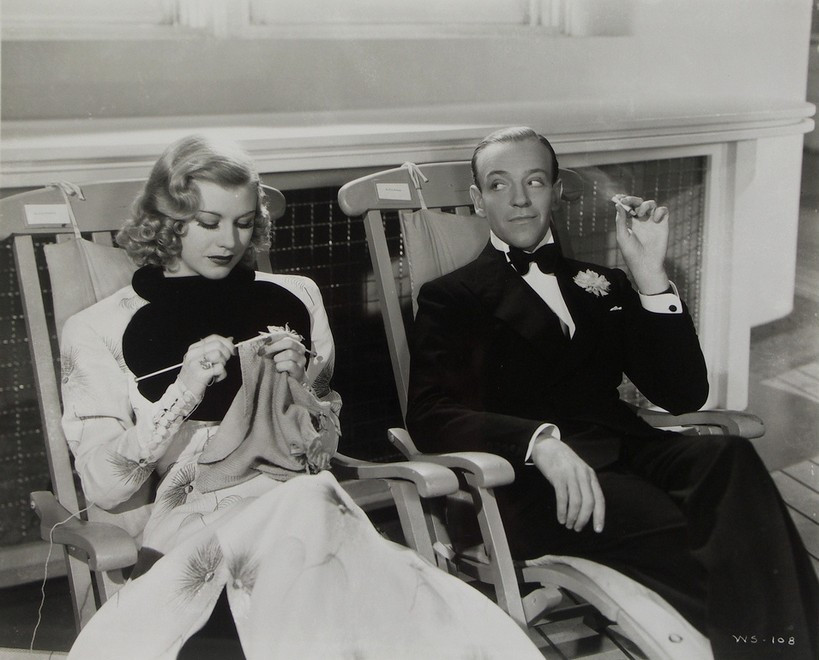 Lobby card for Shall We Dance showcasing Fred Astaire and Ginger Rogers in a ballroom pose
Lobby card for Shall We Dance showcasing Fred Astaire and Ginger Rogers in a ballroom pose
The Plot Unveiled:
Shall We Dance, directed by Mark Sandrich, produced by Pandro S. Berman, and written by Allan Scott and Ernest Pagano, spins a romantic yarn built on humorous misunderstandings. Fred Astaire plays Peter P. “Petrov” Peters, an American ballet dancer in Paris yearning to fuse ballet with the “warmth and passion of tap dancing.” His fascination leads him to Linda Keene (Ginger Rogers), a celebrated tap dancer whom he becomes infatuated with, much to the chagrin of ballet company owner Jeffrey Baird (Edward Everett Horton).
“I told you, I haven’t even met her. But I’d kinda like to marry her… I think I will.”
Peter’s pursuit of Linda results in an awkward first encounter. Linda, preoccupied with her own problems, initially dismisses Peter as just another admirer. However, Peter is persistent, following her onto the same ocean liner bound for New York. Onboard, a series of comical mishaps and mistaken identities ignite a rumor that Peter and Linda are secretly married, setting the stage for delightful chaos and romantic complications.
 Ray Bolger in On Your Toes, the stage production that inspired Shall We Dance
Ray Bolger in On Your Toes, the stage production that inspired Shall We Dance
Although Shall We Dance was initially conceived as a potential farewell film for Astaire and Rogers, their overwhelming popularity ensured their continued partnership. While individual aspirations remained, they were placed on hold as their combined star power led them to star in Carefree, The Story of Vernon and Irene Castle, and The Barkley’s of Broadway.
“What are the grounds for divorce in this state?”
“Marriage.”
While some critics place Shall We Dance slightly below Top Hat and Swing Time in their ranking, the film’s merits are undeniable. The Gershwin’s score is a major highlight, and the personal connection between Fred Astaire and George Gershwin, who frequently visited the set, enriched the production. Astaire himself fondly recalled these times in his autobiography, Steps In Time, noting Gershwin’s enthusiasm for emerging talents and the evolving entertainment landscape. Tragically, George Gershwin passed away shortly before the film’s release, making Shall We Dance a poignant tribute to his genius.
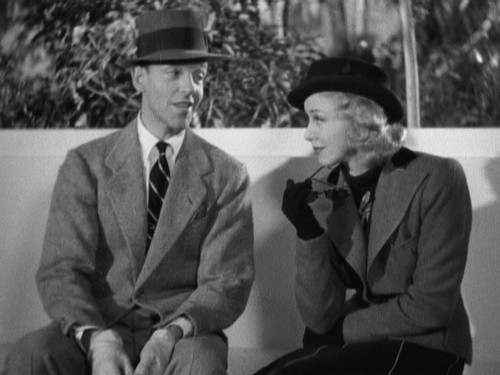 Fred Astaire and Ginger Rogers in a romantic close-up in Shall We Dance
Fred Astaire and Ginger Rogers in a romantic close-up in Shall We Dance
Ultimately, the heart of Shall We Dance lies in the captivating performances of Fred Astaire and Ginger Rogers. Their magnetic on-screen chemistry and unparalleled dance skills are the film’s driving force. Their characters, Peter and Linda, are charming, relatable, and humorous, drawing the audience into their world and making us wish to be part of their enchanting story.
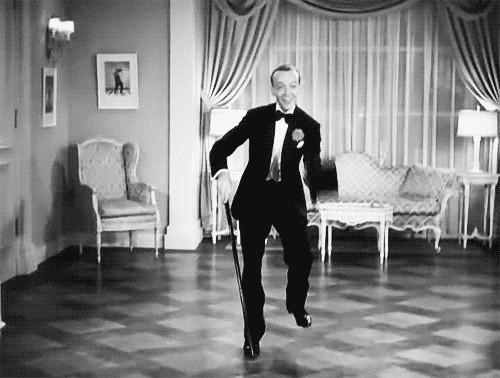 Phyllis and Fred Astaire during the Shall We Dance era
Phyllis and Fred Astaire during the Shall We Dance era
Fred Astaire embodies Pete Peters with his signature suavity and virtuosity. His dance prowess shines in ballet, jazz, and ballroom, and his character’s foray into tap sets the plot in motion. Ginger Rogers delivers a nuanced performance as Linda Keene, a musical comedy star yearning for a simpler life, whose plans are hilariously derailed by Peter’s romantic pursuit and the ensuing marriage rumor.
Edward Everett Horton’s portrayal of Jeffrey Baird adds another layer of comedy. A frequent co-star with Astaire and Rogers, Horton’s performance in Shall We Dance is particularly beloved by fans. Moreover, Shall We Dance distinguishes itself with a “complex plot” and a “background that has plenty of scope for different dance ideas,” as Astaire described it. The film’s narrative provides a strong foundation for showcasing their exceptional talents.
 Ginger Rogers looking glamorous in Shall We Dance
Ginger Rogers looking glamorous in Shall We Dance
The film is also punctuated with memorable musical numbers, including “I’ve Got Beginner’s Luck,” “They Can’t Take That Away From Me,” and “Slap That Bass,” featuring Astaire tap dancing in the ship’s engine room in a groundbreaking mixed-race scene. However, the most iconic and beloved sequence is undoubtedly “Let’s Call The Whole Thing Off.” This scene features Fred Astaire Dancing On Roller Skates with Ginger Rogers in Central Park, a dazzling display of skill and charm. Astaire masterfully incorporates the circular rink into the choreography, referencing the “oompah-trot” he and his sister Adele popularized in vaudeville.
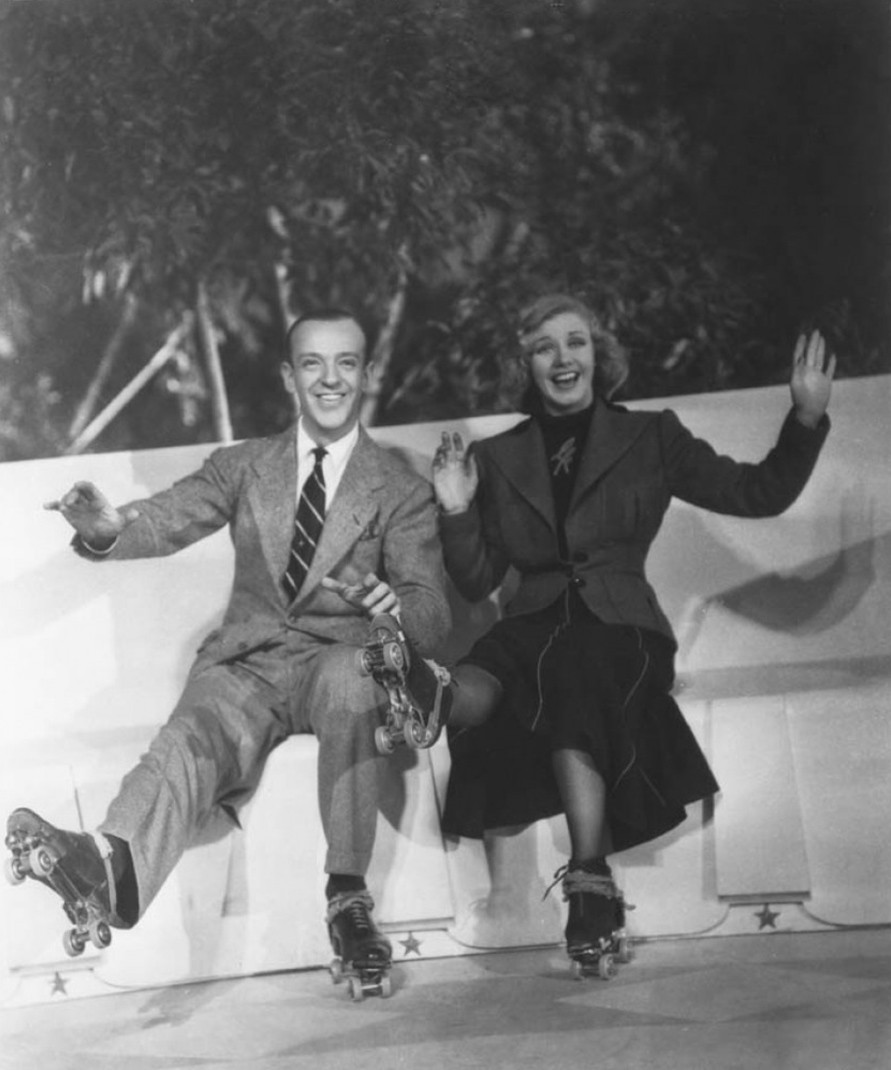 Fred Astaire and Ginger Rogers roller skating in Central Park in Shall We Dance
Fred Astaire and Ginger Rogers roller skating in Central Park in Shall We Dance
The roller skating scene is a perfect example of Astaire’s innovative approach to dance. He wasn’t just a dancer; he was a choreographer who constantly sought new ways to express movement and storytelling through dance. Dancing on roller skates added a layer of complexity and visual delight, showcasing his control, balance, and effortless grace even on wheels. Ginger Rogers, equally adept, matches Astaire’s skill, creating a breathtaking and humorous performance.
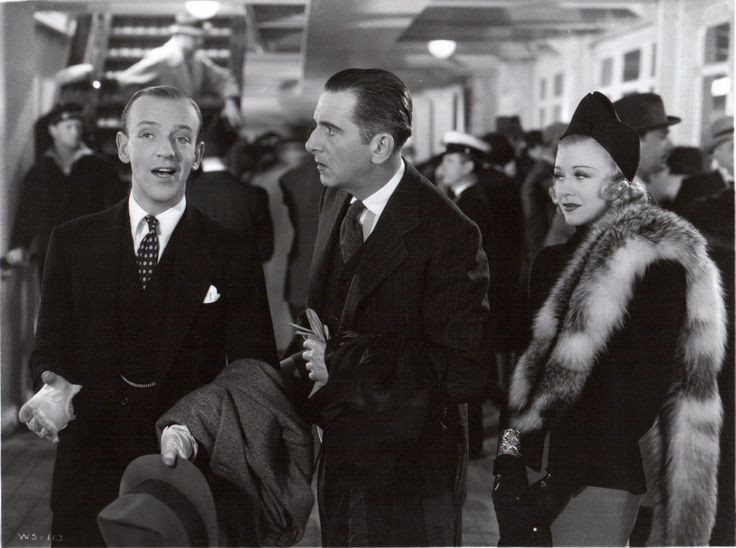 Ginger Rogers and Fred Astaire laughing in Shall We Dance
Ginger Rogers and Fred Astaire laughing in Shall We Dance
The “Let’s Call The Whole Thing Off” roller skating number isn’t just technically impressive; it’s emotionally resonant. It perfectly encapsulates the playful banter and developing romance between Peter and Linda. The humor of their near-misses and the sheer joy of their synchronized skating make it a highlight of the film and a testament to their on-screen connection.
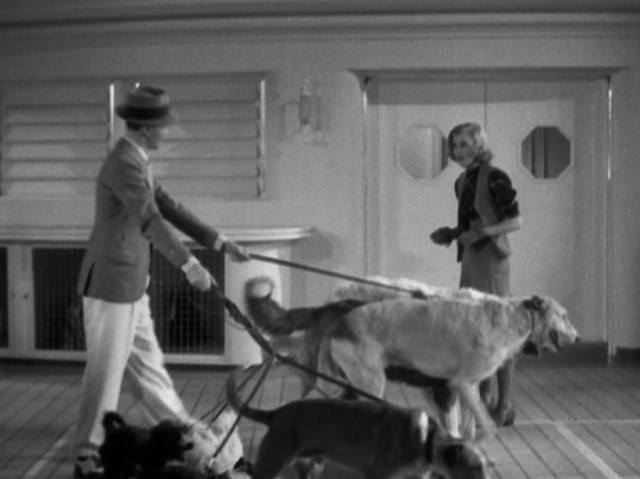 Fred Astaire in a tap dancing pose in Shall We Dance
Fred Astaire in a tap dancing pose in Shall We Dance
 Linda Keene's dog in Shall We Dance looking up adorably
Linda Keene's dog in Shall We Dance looking up adorably
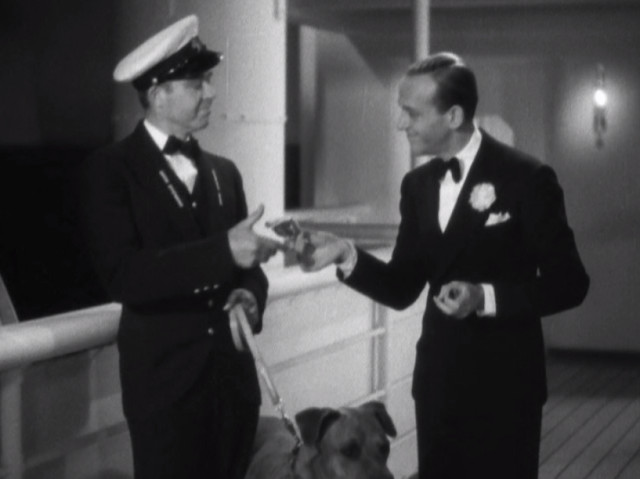 Ginger Rogers pleading in Shall We Dance
Ginger Rogers pleading in Shall We Dance
In conclusion, Shall We Dance is a sparkling romantic comedy enriched by wit, clever dialogue, and a beautifully crafted script. It stands as a shining example of the magic created by Fred Astaire and Ginger Rogers, whose combined talents transform the film into something truly special. And within this cinematic gem, the scene of Fred Astaire dancing on roller skates remains an unforgettable testament to his genius and the enduring appeal of this legendary dance partnership.
 Fred Astaire looking dapper in Shall We Dance
Fred Astaire looking dapper in Shall We Dance
Edward Everett Horton, in his role as Jeffrey Baird, further elevates the film with his comedic timing, solidifying Shall We Dance as a quintessential Astaire-Rogers classic.
 Edward Everett Horton looking surprised in Shall We Dance
Edward Everett Horton looking surprised in Shall We Dance
The roller skating scene in Central Park is more than just a dance number; it’s a cultural touchstone. It’s a moment of pure cinematic joy that continues to delight audiences decades later. Fred Astaire dancing on roller skates isn’t just a novelty; it’s an artistic statement, showcasing his dedication to innovation and his unparalleled ability to make the seemingly impossible look effortless. This scene, and indeed the entire film, encapsulates the enduring magic of Fred Astaire and Ginger Rogers.
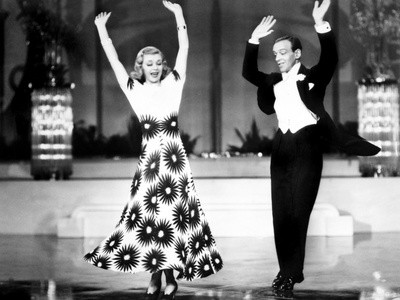 Publicity shot of Fred Astaire and Ginger Rogers for Shall We Dance
Publicity shot of Fred Astaire and Ginger Rogers for Shall We Dance
 Publicity shot of Fred Astaire and Ginger Rogers embracing for Shall We Dance
Publicity shot of Fred Astaire and Ginger Rogers embracing for Shall We Dance
Trivia:
The iconic roller skate dance sequence in Shall We Dance famously required approximately 150 takes. Reportedly, both Fred Astaire and Ginger Rogers experienced bruising from numerous falls during these takes, evident in their slightly pained expressions as they rise from the “lawn” at the scene’s conclusion. Shall We Dance marks the seventh of ten film collaborations between Fred Astaire and Ginger Rogers.
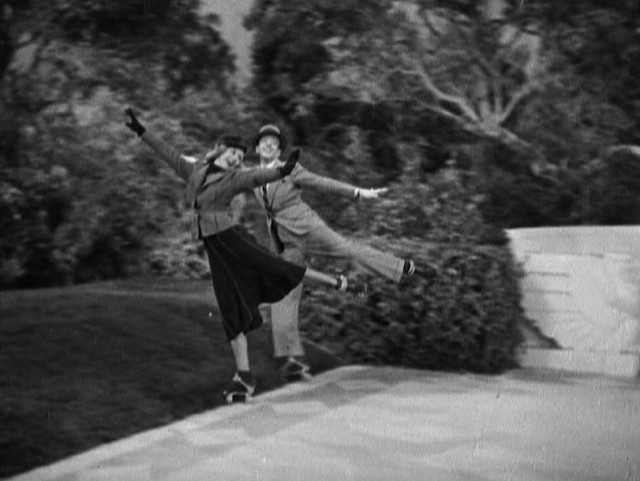 Roller skates from Shall We Dance in a still image
Roller skates from Shall We Dance in a still image
Cast:
Fred Astaire: Born Frederick Austerlitz, May 10, 1899 – June 22, 1987.
Ginger Rogers: Born Virginia Katherine Rogers, July 16, 1911 – April 25, 1995.
Edward Everett Horton: Born Edward Everett Horton, March 18, 1886 – September 29, 1970.
 Publicity portrait of Edward Everett Horton
Publicity portrait of Edward Everett Horton


